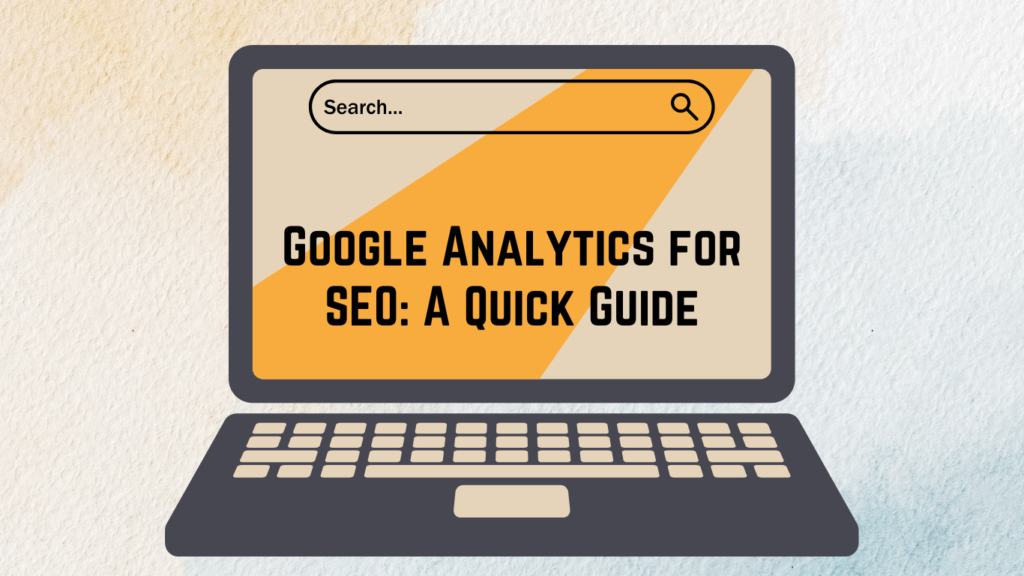
Are you ready to take your website’s visibility to the next level? Google Analytics is your secret weapon! This powerful tool provides invaluable insights into how users interact with your website, helping you make data-driven decisions to boost your search engine rankings.
In this quick guide, we’ll dive into the key metrics and strategies you need to master to optimize your SEO efforts with Google Analytics. Get ready to unlock the full potential of your website!
1. Track Organic Traffic
Organic traffic is crucial for SEO. To monitor it in Google Analytics, go to Acquisition > All Traffic > Channels. This section shows the volume and quality of organic traffic. Key metrics to focus on include:
- Sessions: Number of visits to your site.
- Bounce Rate: Percentage of visitors who leave after viewing only one page.
- Average Session Duration: Average time visitors spend on your site.
These metrics help you evaluate how effectively your site attracts and retains visitors.
2. Monitor Landing Pages
Navigate to Behavior > Site Content > Landing Pages in Google Analytics. This section provides a detailed view of which pages are drawing the most organic traffic. By analyzing this data, you can gain valuable insights into the effectiveness of your content and user engagement.
To effectively monitor the performance of your website’s landing pages, follow these steps:
Key Metrics to Monitor:
- Pageviews: The total number of times a specific page has been viewed. High pageviews indicate popular content.
- Bounce Rate: The percentage of visitors who leave after viewing only one page. A high bounce rate on a landing page may suggest that the content isn’t meeting user expectations.
- Average Session Duration: The average time visitors spend on a page. Longer durations typically indicate more engaging content.
- Conversion Rate: The percentage of visitors who complete a desired action (e.g., form submission, purchase) on a landing page. This metric is crucial for assessing the page’s effectiveness in driving conversions.
- New vs. Returning Visitors: Understanding the balance between new and returning visitors can help you tailor content to both attract new users and retain existing ones.
3. Understand User Behavior
Understanding how users navigate your website is crucial for improving user experience and optimizing your site for better search rankings. The Behavior Flow report in Google Analytics is an invaluable tool for this purpose. Here’s a detailed guide on how to leverage this report effectively:
1. Accessing the Behavior Flow Report:
In Google Analytics, navigate to Behavior > Behavior Flow. This report provides a visual representation of the path users take through your site, from landing on a specific page to exiting.
2. Analyzing the Report:
- Starting Pages: Identify the pages where users begin their journey on your site. These are usually your landing pages and can give insights into what content is attracting the most attention.
- Path Through Site: Observe the sequence of pages users visit. This helps you understand common navigation patterns and how users interact with your content.
- Drop-off Points: Look for points where users are dropping off or exiting your site. High drop-off rates on certain pages can indicate problems such as poor user experience, irrelevant content, or slow load times.
3. Improving Search Rankings:
A better user experience leads to longer session durations and lower bounce rates, which are positive signals for search engines. By optimizing your site based on the insights from the Behavior Flow report, you can enhance your site’s overall performance and improve its search rankings.
4. Regular Monitoring:
Continuously monitor the Behavior Flow report to stay updated on user behavior trends and make ongoing adjustments. Regular analysis helps in maintaining an optimized user experience, ultimately leading to higher engagement and better search engine performance.
4. Analyze Keywords
Analyzing keywords is crucial to understanding how users find your website through search engines. While Google Analytics has some limitations with keyword data due to the “(not provided)” issue, integrating it with Google Search Console can provide the additional insights you need. Here’s a detailed guide on how to analyze keywords effectively:
1. Integrate Google Analytics with Google Search Console:
- Step 1: Ensure you have administrative access to both your Google Analytics and Google Search Console accounts.
- Step 2: In Google Analytics, navigate to Admin > Property Settings and select the property you want to link.
- Step 3: Under the Search Console section, click on Adjust Search Console and follow the instructions to link your accounts.
- Step 4: Once linked, you can access Search Console data directly within Google Analytics.
2. Access Keyword Data:
- Step 1: In Google Analytics, go to Acquisition > Search Console > Queries. This report shows the keywords that drive impressions and clicks to your website.
- Step 2: Review the Queries report to understand which keywords are bringing the most traffic. The report provides data on Impressions, Clicks, CTR (Click-Through Rate), and Average Position.
- Step 3: Identify high-performing keywords with a good balance of impressions and clicks. These keywords are effectively driving traffic to your site.
5. Measure Page Speed
Site speed is a crucial factor that directly impacts both user experience and SEO rankings. Slow-loading pages can lead to higher bounce rates, lower engagement, and poor search engine rankings. Therefore, it’s essential to regularly monitor and optimize the speed of your website. Here’s a detailed guide on how to measure and improve site speed using Google Analytics:
1. Accessing the Site Speed Report:
- In Google Analytics, navigate to Behavior > Site Speed. This section provides detailed insights into the loading times of your pages.
2. Key Metrics to Analyze:
- Page Load Time: This metric shows the average time it takes for a page to fully load. Ideally, your pages should load within 3 seconds.
- Server Response Time: This metric measures the time it takes for your server to respond to a user’s request. Faster server response times improve overall site performance.
- Redirection Time: This metric indicates the time spent on URL redirections before the final page loads. Minimizing redirections can speed up loading times.
3. Steps to Optimize Page Speed:
- Optimize Images: Compress and resize images to reduce load times without sacrificing quality.
- Minimize HTTP Requests: Reduce the number of elements on a page, such as scripts, images, and CSS files, to decrease the number of HTTP requests.
- Enable Browser Caching: Set up caching to store static resources locally on users’ browsers, reducing load times for returning visitors.
- Minify CSS, JavaScript, and HTML: Remove unnecessary characters from your code to reduce file sizes and improve load times.
- Use a Content Delivery Network (CDN): Distribute your site’s content across multiple servers worldwide to improve load times for users in different geographic locations.
- Optimize Server Response Time: Improve your server performance by upgrading hosting plans, using a faster web server, or optimizing your database.
Conclusion:
By mastering Google Analytics, you can gain a competitive edge in the digital landscape. By understanding user behavior, tracking key metrics, and implementing data-driven strategies, you can optimize your website for better search engine rankings and increased organic traffic.
Remember, Google Analytics is an ever-evolving tool. Stay updated with the latest features and best practices to maximize its potential.



